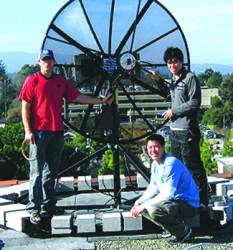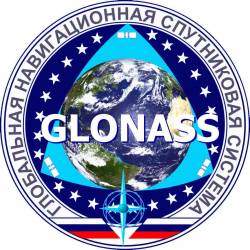
Globally, GNSS markets are experiencing a sharp growth in sales of consumer products and services. Among these is a cluster of applications known collectively as location based services (LBS), a rapidly evolving field of wireless data services that provide users of mobile terminals with information about their surroundings. As a typical example, travellers can receive directional assistance using downloaded digital maps on which graphical symbols indicate points of interest.
Globally, GNSS markets are experiencing a sharp growth in sales of consumer products and services. Among these is a cluster of applications known collectively as location based services (LBS), a rapidly evolving field of wireless data services that provide users of mobile terminals with information about their surroundings. As a typical example, travellers can receive directional assistance using downloaded digital maps on which graphical symbols indicate points of interest.
Almost invariably, location based services are delivered using mobile handsets and cellular telephone networks and, ever more often, satellite positioning. Although many LBS applications take place outdoors with unobstructed radiovisibility to GNSS satellites, most will also be used in urban areas and indoors where GNSS signal reception is more problematical. Emergency call positioning is an example of a service that must work both indoors as well as outdoors. However, low-power spread spectrum GNSS satellite signals suffer heavy attenuation in penetrating structures and obstacles.
Due to a strong inverse dependency of dwell time on signal power, traditional sequential-search GNSS receivers have difficulty in acquiring satellite signals if obstructions exist in the signal path. Consequently, assistance techniques that use the wireless communications infrastructure to improve signal acquisition speed and sensitivity are becoming ever more common, and the industry is currently perfecting receiver designs and deploying new network services to exploit these techniques’ potential to the full. Moreover, new cellular standards now include stringent sensitivity requirements and test specifications to ensure that the GNSS receivers integrated in mobile phones operate properly under weak signal conditions.
The design of consumer GNSS receivers is still mainly focused on GPS C/A-code reception; however, GNSS providers are envisaging signals with new coding and modulation schemes. These include the new GPS civil signal that transmits on the L2 frequency as well as the new signals that the European Galileo system now under development will transmit. Because of differences in such variables as frequency allocation, transmission power, and signal structure, these new signals and receiver designs options present a range of possibilities for their practical performance in autonomous and assisted modes.
As is typical of most air interface standards, the related interface control documents (ICDs) focus on the technical specifications of the signals in space and avoid discussing receiver operation and performance. Supplementary analysis is therefore needed in order to set realistic performance targets for future receivers and make informed choices as to which GNSS signals might offer optimal performance.
This article analyzes the expected performance of GPS and Galileo signals in assisted and unassisted modes. It begins with a discussion of state-of-the-art receiver design and signal processing techniques, discusses the assisted GNSS (A-GNSS) mode, and key features of the various GNSS signals.
The article then introduces a numerical scheme for evaluating the theoretical and practical performance of these signals in both assisted and unassisted modes. A key metric introduced in this methodology, attenuation margin, represents the maximum acceptable power loss in a GNSS signal path.
The article’s conclusion emphasizes the importance of GNSS acquisition sensitivity for location based services in view of regulations and user expectations. Parallel receiver architectures and terrestrially available assistance were mentioned as means of improving acquisition performance. Extreme value theory was used to gain an insight into the distribution of signals in large search spaces typical of parallel acquisition receivers. The discussion showed that acquisition sensitivity depends approximately on the inverse of the logarithm of the search space dimension.
An analytic expression was derived for system detection probability and used to assess receiver performance in the assisted and unassisted acquisition of several GPS and Galileo signals. The results indicate that while the achievable acquisition sensitivity depends mainly on the length of coherent integration, it is also negatively influenced by the dimension of the search space. The average sensitivity loss attributable to the dimension was 4 dB in unassisted acquisition and 2 dB in assisted acquisition so that an average sensitivity improvement of 2 dB can be attributed to the assistance.
Pilot signals could be acquired at a level 5 dB lower than the corresponding data signals both in the assisted and unassisted cases. However, use of pilots is only practical when assistance is available due to the otherwise extremely high volume of the search space. Taking into consideration the 2 dB improvement from reduction in search space, a total average sensitivity improvement of 7 dB could therefore be achieved by using assistance in the acquisition of the new GNSS signals by assessing the relative performance of GNSS signals in assisted and unassisted mode in terms of the attenuation margin.
For the full article, including graphs, figures, and further resources, download the PDF above.





